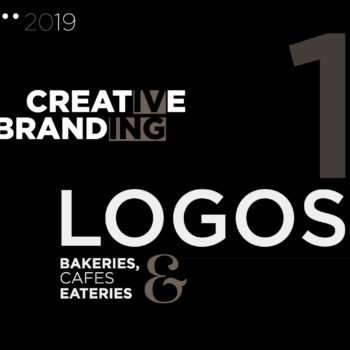Branding is a psychologically driven concept.
I say this because to me a brand is more about consumers’ perception rather than just the logo, name or tagline. These elements contribute towards creating a foundation of the brand. Brand management on the other hand is the study on brand perceptions and discovering ways to alter them.
For a brand to flourish, understanding brand management and its implementation play a key role. Brands establish when a business knows how to tap into consumers’ preferences. In the digital era, this insight becomes even more essential due to increasing competition. Brand management is an on-going process of maintaining an association with your audience.
Customer satisfaction plays a major role here since it is directly proportional to loyalty.It’s a non-negotiable business practice for all the ventures who want to stay relevant in the eyes of consumers.Maintaining consistency, delivering on the values your business holds & visual representation is just a few ways to achieve it. However, let us first understand why brand management holds such importance:
To create a positive brand perception:
Your brand is the experience your customers go through when they consume your products, talk to your staff or visit your website. All such interactions with your business create perceptions. Undeniably, it proves that customers will experience and perceive your brand the way you want them to. That is where brand management comes to the rescue. Yes, you cannot control consumer reactions, but you surely can influence them
To imbibe brand loyalty:
The concept of branding is based on consumer loyalty. And it is not something you can achieve in a fortnight. Experiences derive loyalty. Brand management provides an opportunity to a business to show their customers that they care about them. Such emotional connections with your consumers ensure they stay loyal. Which can only be achieved through the best brand management practices
Business progression:
It is a fact that trends keep on changing. There are several factors that influence this change. As a result consumers’ preferences change. In such a volatile environment, a brand name can save your business from disappearing. When people have faith in you as a brand, it’s very less likely to lose consumers. And all this is achievable only by good brand management practices

Impact of brand management:
Brand management is beyond marketing practices. Taking inspiration from successful brands and their methods is fine only until you do not lose your unique quotient. Effective brand management provides you with an opportunity to connect with your audience in your distinctive capacity. Everyone receives the benefit when your brand gets recognition. For instance:
- Marketing team experiences an ease in convincing prospective clients to buy your products and services
- Your business becomes a preference for prospective hires
- Sales see an upward trend from consumers who believe in your brand value
- Customer expectations are in sync with organizational goals
- Customers develop confidence, therefore a loyal customer base develops for your brand
Effective brand managementis the bedrock on which marketing strategies are based. This is not something difficult to achieve. All that is required is the knowledge of right practices to be adopted. Allow me elaborate some key aspects of brand management in detail:
Embrace your identity:

The first step towards effective brand management is to know your brand identity. It starts with knowing what your business stands for. As we call it – identify your brand essence. It is not as easy as it sounds. You need to get clarity on your vision, your mission and gain consensus about your organizational values.
Identify traits that your brand must adopt and also the ones that you need to shirk in order to excel. Identify your unique qualities as a brand that distinguishes you from other competitors. Analyze your strength and find out ways to convert them into benefits. Communicating your strengths with consistency is absolutely necessary. Focus on your weaknesses too. Be authentic in your approach and character.
But that’s not all! It is also important that the same values must resonate in all your employees, stakeholders and leadership too. A brand builds and sustains only when everyone involved have the same set of beliefs. For instance: Microsoft acquired Razorfish (an internet and technological innovation company) in 2007. Couple of years later, Microsoft sold Razorfish because it wasn’t a good fit for Microsoft’s brand strategy.
Build your brand from scratch:
Sounds obvious? Yes, we know the brand has to be built from scratch – after all that is how everything starts. The important thing I am emphasizing here is how it has to be done. Sometimes “how you say” is more relevant than “what you say or do”. This is something that is most likely to take your brand from being average to awesome.
An important building block responsible for the greatness of your brand. Imbibe integrity in your brand. Follow through on your promises and deliver experiences that are genuinely customer-centric. Remember that good experiences stay in people’s mind.
A great example of this aspect is Red Bull. They have truly taken this philosophy to the next level. Red Bull was introduced as a new drink category in the late 1980s. Today, they are a leading sponsor of sporting events and adventure activities. Surely, they have come a long way. They have constantly pushed boundaries with extreme and memorable activities that were in sync with their journey. Like their little DIY flying machine competition that garnered extensive acclaim and reflected the meaning of their tagline – “Red Bull Gives You Wings.”
Create opportunities for brand visibility:
 Y
Y
Our brand cannot be successful if no one knows you exist. Creating awareness about your brand is the basis of all marketing and advertising strategies. Chances of something getting popular increase when maximum people know about its existence. The same rules apply here. Awareness further opens the door to creative marketing techniques. Once your goal of visibility is established, you can work further and engage in marketing and advertising practices.
The inside-out approach:
Organizations often underestimate the fact that everyone working for them represents their brand. After all they are the ones who interact with customers, vendors & partners on daily basis. Candidates aspire to associate with renowned brands. However, brands equally need motivated and self-driven employees too. The more you imbibe right brand qualities in them, the more they will contribute to the success of your organization. Their opinions genuinely matter and are of tremendous value.
All those working for your organization can provide you an insight of your brand. What they think about it and how they perceive it. Those stories and experiences can reinforce customer perceptions about their brand. This canstart as early as their on boarding sessions followed by refresher sessions at regular intervals. Emphasize on their contribution to your brand so that they feel valued. Ask their input and suggestions for uplifting your brand value. It’s all about involvement and people deliver best when they feel involved.
Connecting at the socio-emotional level:
Brands have always been adopting the strategy of connecting emotionally with their consumers. No doubt this is a proven success mantra. But, connecting at the socio-economic level is defined as the next level engagement. It refers toan individual’s emotions as well as relationship to society. As we already know, a brand is beyond logo, TV commercials or website. A brand is an idea manifested in the form of products or services. It might be a great idea to initiate or become a part of some CSR activities i.e. indulge in Corporate Social Responsibilities. Integrating social concerns in business operations helps you get the much needed connect with your consumers.

Starbucks’ third-place concept was a great initiative towards creating an emotional connection with its consumers. So much so that people did not mind spending time there and paying for overpriced coffee! They built a sense of community other than work and home where people could gather & interact with each other. This strategy was the cornerstone of turning Starbucks into an $88 billion venture.
Be open to changes:
A brand that is successful is always open to adjustments. Branding is an on-going process. You have ready and receptive to changing market trends. Something that worked in the past may not work today – the realization of this fact is crucial. That is how you as a brand can be flexible and be able to reinvent yourself.
The world witnessed an amazing such example in 2009. When the global economy was struggling, Hyundai Motors introduced an assurance program. Under this program, buyers could return their cars if they lost their jobs. There was no financial obligation attached to it. Interestingly by Feb’2010, only 2 buyers returned their cars, however, Hyundai saw a 14% year on year sales jump. This happened during the time when other automobile giants saw sales reducing up to 30%. This was yet another example of carefully designed rebranding strategy.
Quantify your strategic effectiveness:
Return on Investment (ROI) is a key indicator to measure the effectiveness of your brand management strategies. You can keep a close watch on the changes in ROI to determine how well your strategies are working. Additionally, monitor customer reactions to your product and price adjustments. Apart from these, there are many other tools for testing the effects of marketing strategies. You need to find the right match according to your brand authenticity. It has been observed that brand readjustments ultimately lead to better sales and profits. However, the focus should not be only on increasing sales in the short run. Brand value and image must always be considered.
Consistency is the thumb rule:

I cannot stress enough on how essential consistency is when it comes to marketing strategies for brand recognition. Consistency in your campaigns towards one ideology can take your business a long way. It becomes your distinguishable feature. There is an amazing example – In 2008 Presidential campaign, Obama focused only on one message throughout i.e. Change. Obama’s campaign used the slogan “Change we can believe in” and the chant “Yes We Can”. Undoubtedly, it worked and the rest is history!
Engage to increase visibility:
We are experiencing a time when it takes just a few seconds for people to make a decision about something. And brands are equally affected. Especially with the growth of digital media, when everything is accessible at the touch of a button, it is so important to keep up the pace and comply with the latest trends. You wouldn’t want to vanish in the crowd…There are many methods by which your brand can stay engaged so as to increase visibility.
For instance: Sponsorships, advertisements, being associated with various non-profits etc. Your active presence on social media is also one of these requisites. Make use of the digital media platforms to engage with people and communities. Show things that create a larger visibility of your brand. And the list does not end here. Think out of the box to develop many more such ideas. At the end of the day, these efforts make your brand successful.
Choose your visuals precisely:
From the design of your logo to the outlook of your website, everything that your potential customers see, they create a perception about your brand. Visual images are the most powerful method to grab attention and build brand recognition. All this in merely a few moments. Human brain processes information in Nano seconds. You can choose this opportunity wisely to convey your brand values to potential customers. Visual representations tell your story and beliefs in an instant. Those few seconds decide if you will gain a customer or lose one. The cost involved is negligible in the long term.
Branding has evolved a lot in the last decade. Consumer preferences, choices and inclinations are changing by the hour! Amidst the cut-throat competition, you can always find ways to create a niche for yourself. We are here to provide assistance on “anything and everything” of brand management. And in the journey, who knows we might also learn a thing or two.








